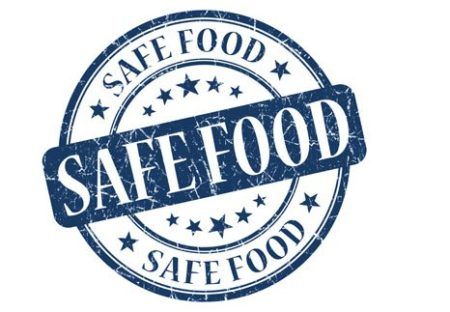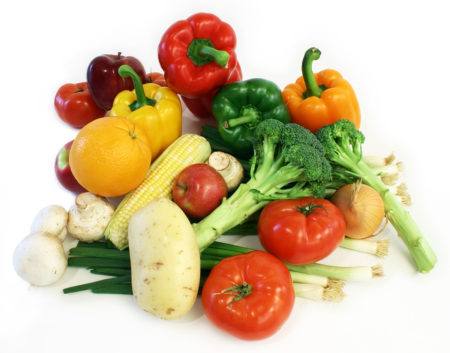FSMA Compliance Starts Now- Are we Ready?
 FSMA represents the most sweeping change to U.S. food regulations in over 70 years. It represents a radical change for food safety in US and its suppliers abroad, bringing a new focus on prevention. It is a fundamental change in food regulations affecting the entire food supply chain.Now, all seven rules of FSMA (Food safety Modernization Act) are now final and implementation for the large companies starts now. Below is a quick overview of the new rules provided by the FDA. The final rules are:
FSMA represents the most sweeping change to U.S. food regulations in over 70 years. It represents a radical change for food safety in US and its suppliers abroad, bringing a new focus on prevention. It is a fundamental change in food regulations affecting the entire food supply chain.Now, all seven rules of FSMA (Food safety Modernization Act) are now final and implementation for the large companies starts now. Below is a quick overview of the new rules provided by the FDA. The final rules are:
- Preventive control for human food
- Preventive control for animal food
- Accredited third-party certification
- Foreign supplier verification programs for importers of food for humans and animals
- Produce safety
- Sanitary transportation of human and animal food
- Mitigation strategies to protect food against international adulteration
Preventative control human food and animal food
The FSMA transforms the FDA’s approach from a reactive system that responds to outbreaks (rather than prevents them) to a preventative system based on controls across the food supply. Animal food manufacturers must implement current Good Manufacturing Practices and Preventive Controls. The plan also involves the following:
- Food facilities must establish and implement a food safety system that includes analysis of hazards and risk-based preventive controls.

- Establish preventative controls including process, food allergen, and sanitation controls, as well as supply-chain controls and recall plans.
- Management oversight of preventive control, including corrective actions, documented corrections and verification that the corrective action is working. Verification could include validating, with scientific evidence, that a preventive control is capable of effectively controlling an identified hazard.
The company must maintain and implement a written food safety plan. It must contain elements like hazard analysis, preventative controls, monitoring procedures and corrective action.
Accredited third-party auditors/ certification bodies to conduct audits
FDA would recognize accreditation bodies, which would in turn accredit the third party auditors/certification bodies that would audit and issue certifications to qualifying foreign facilities.
Requirements of accreditation bodies
In order to be recognized by FDA, the accreditation bodies would have to submit to certain FDA requirements themselves and impose certain requirements on the entities they accredit. FDA would monitor their performance, the accreditation bodies will need to assess and correct any problems in their own performance, submit reports to the US FDA, maintain records of the program and provide US FDA access to them.
Third-party certification bodies
Ensure that their auditors are competent and objective, they need to verify the effectiveness of their corrective actions, assess and correct any problem that they may have, maintain and provide US FDA access to records to the program. The third-party certification bodies can be a foreign government, a third-party entity or individual.
Foreign supplier verification programs for importers of food for humans and animals
Any human or animal food imported into the U.S. must be produced under the same safety standards as food that is produced in the US. It must pass through a risk analysis and the application of preventive controls designed to minimize those risks before it reaches the American consumer. If only manufactured overseas, the importer of the finished product is responsible for insuring that these safety controls have occurred. If manufactured domestically, the U.S. facility must insure these safety controls.
Produce safety
 There are 6 key requirements, one that applies to sprouts only. Agricultural water– No detectable level of generic E. coli would be allowed in water used for hand washing, food contact surface application, ice that is applied directly to produce and for sprout irrigation.Biological soil amendments dealing with treatment of raw manure and compost. Wild and domestic animals– Farmers are required to take measures to identity animal intrusion and not harvest produce that is likely to have been contaminated by animals. Worker training and health and hygiene–Farm workers need to be trained in basic health and hygiene requirements. Equipment, tools and buildings- establishes rules to prevent these as sources of contamination, and measures to prevent contamination.
There are 6 key requirements, one that applies to sprouts only. Agricultural water– No detectable level of generic E. coli would be allowed in water used for hand washing, food contact surface application, ice that is applied directly to produce and for sprout irrigation.Biological soil amendments dealing with treatment of raw manure and compost. Wild and domestic animals– Farmers are required to take measures to identity animal intrusion and not harvest produce that is likely to have been contaminated by animals. Worker training and health and hygiene–Farm workers need to be trained in basic health and hygiene requirements. Equipment, tools and buildings- establishes rules to prevent these as sources of contamination, and measures to prevent contamination.
Sanitary transportation of human and animal food
The key requirements include: Transporting vehicles- designed and maintained to ensure that it does not cause the food that it transports to become unsafe. Transportation operations- measures are taken during transportation to ensure food safety (e.g. temperature control, cross contamination, unintentional incorporation of allergens).Training– personnel training in sanitary transportation practices and documentation of this training is required. Records- Maintenance of records of written procedures, agreements and training is required.
Mitigation strategies to protect food against intentional adulteration
Under this rule each facility is required to prepare and implement a written food defense plan. The plan must include:
- Vulnerability assessment– including the following elements: The severity and scale of the potential impact on public health; the degree of physical access to the product; and the ability to successfully contaminate the product.
- Mitigation strategies– each actionable process step to provide assurances that the identified vulnerabilities will be minimized or prevented.
- Mitigation strategy management components– Step taken for proper implementation including monitoring, corrective action, and verification.
- Training and record keeping: Ensure that personnel assigned to the vulnerable areas receive appropriate training and record keeping.
